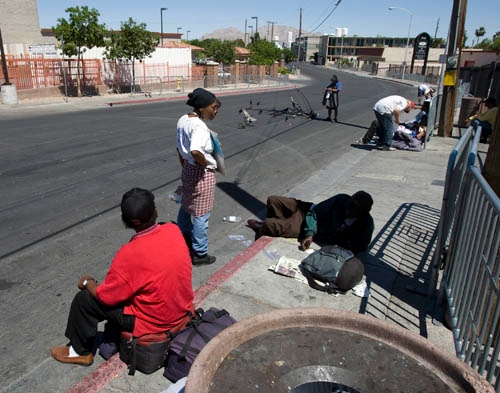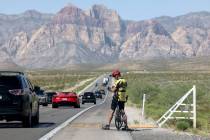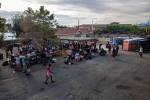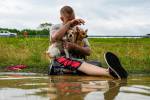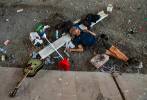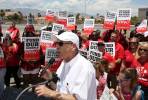Survey finds fewer homeless people in Clark County
The good news: About 2,000 fewer people were homeless in Clark County this year than two years ago, according to the results of a large-scale January homeless count released Thursday.
The results showed that 11,269 people were homeless in the county on any given day, compared with 13,338 who were homeless in 2009.
"I feel hopeful," said Tyrone Thompson of the Southern Nevada Regional Planning Coalition's committees on homelessness and youth. "But we still have work to do. There are still homeless people out there."
The bad news: The number of those homeless people who were "unsheltered" -- living on the streets, in cars or makeshift shelters -- increased by about 19 percent, from 3,027 to 3,608. Also up were the number of "hidden" homeless, including those camping or "squatting" on private property, from 3,307 to 3,899.
Thompson and others who work with the homeless attributed the increases in part to cuts in safety-net programs such as the county's rental assistance program, and to the local foreclosure crisis. Others might be leaving town in search of work.
"You have people who until recently hadn't been affected by the recession," said Linda Lera-Randle El, director of Straight from the Streets homeless outreach program. "We should be grateful those numbers aren't higher."
Two years ago, there were 7,004 "sheltered" homeless -- those staying in emergency shelters, transitional or temporary housing -- in the county. In January, there were 3,762 sheltered homeless, a 46 percent decrease.
Meanwhile, the number of people able to get nonmedical financial assistance through Clark County Social Services fell from 4,650 in 2009 to 1,138 in 2011. Social Services' nonmedical budget was decreased by $26.5 million over the past two fiscal years because of declining property tax revenues and actions of the 2009 state Legislature.
The January census used hundreds of volunteers to conduct a point-in-time homeless count that -- together with numbers gathered during a separate count in rural Clark County and from shelters, hospitals and other sources -- gives social service providers a clear idea of how the local homeless population has changed.
Such censuses are required every two years to apply for federal grant money to fight homelessness.
The results were a mixed bag.
While the number of homeless youth more than doubled, from 154 to 333, the number of people living in homeless encampments fell by 62 percent, from 715 to 250.
Part of the increase in homeless youth can be attributed to collaboration with Clark County School District officials and more thorough methods for counting young people, Thompson said.
Fewer people living in encampments points to the success of collaborative outreach work, Lera-Randle El said.
"We've been doing more intense outreach and putting people into housing faster," she said.
That effort has included a "mobile crisis outreach team" that focuses on providing intensive case management to the "chronically" homeless.
Service providers define chronic homelessness as experiencing several bouts of homelessness over a few years or being homeless for a year or more.
Overall, local government, nonprofit and faith-based groups have done a better job pooling efforts to steer more homeless people into shelters and programs that can get them off the streets for good, Thompson said.
The number of homeless veterans also fell again this year, mirroring a U.S. trend. Those who work with homeless vets say the Obama administration has dedicated more funding to combating homelessness among veterans.
Raw numbers of homeless vets won't be available until June, when a more detailed report of the census is complete.
Phillip Hollon, vice president of plaza services for Catholic Charities of Southern Nevada, was surprised the overall number of homeless had decreased.
"We haven't seen a decline in terms of the shelter services we're providing," he said.
Catholic Charities' shelter in the homeless corridor is full every night, he said, and the charity has to turn people away.
"Maybe they wind up in someone's backyard," he said.
The 2011 census was the fourth countywide effort to conduct a person-by-person count of the homeless. The census cost $86,000 and included paying 300 formerly homeless people in need of work $10 an hour to help volunteers in the count.
Applied Survey Research, a California-based nonprofit social research company that completed the 2007 and 2009 censuses, compiled the results.
Contact reporter Lynnette Curtis at lcurtis@review journal.com or 702-383-0285.
COUNTING THE HOMELESS
2011
Total homeless: 11,269
Street count: 3,608
Shelter count: 3,762
Hidden homeless: 3,899
2009
Total homeless: 13,338
Street Count: 3,027
Shelter Count: 7,004
Hidden homeless: 3,307



